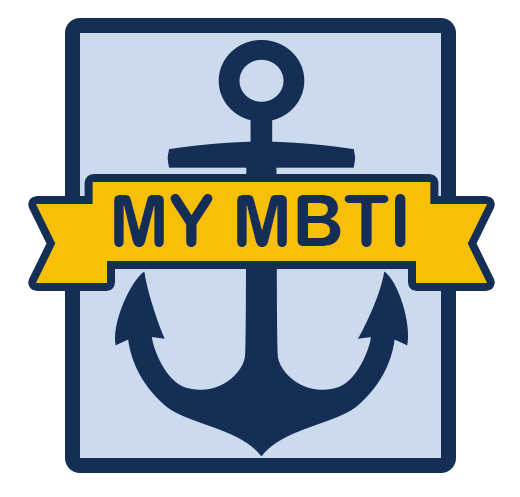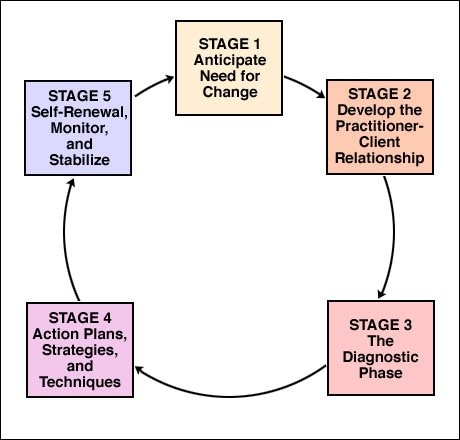
MBADM814:
Module 1: Leadership Communication in Times of Change
Module 1 Overview
Hello and welcome to Module 1: Leadership Communication in Times of Change (Lessons 1–5).
Throughout the next four lessons, we will discuss the contemporary world of leadership communication combined with the dynamics of continuous organizational change. Today’s leaders are faced with the daunting task of creating and supporting a fluid, responsive environment that allows for innovation and creativity. As we will discuss, effective and strategic communication is the essential component to fostering this inventive environment. Understanding the fundamentals of organizational communication will lead us to discussions about organizational structures, time management, audience traits, culture, and group work.
To gain a better understanding of change management, we will identify the triggers of organizational change and their implications. We will discuss the leadership role in adapting communication strategies based on the five critical messages leaders must address. Furthermore, we examine how leaders set the conditions for change and communicate effectively to various stakeholders.
You will see individual and group activities that are integral to the learning environment and that count toward your participation grade in the course. Your contribution to the online discussions in Module 1 (and throughout the course) will allow you to demonstrate and apply the knowledge that you have learned. The instructor will actively review online discussions to help guide and add value to the learning process. However, your insights into, experience with, and understanding of the online discussion topics will be a fundamental aspect of this course. We look forward to your contribution to and active engagement in this learning environment.
Group activities are another consistent component of this course; they begin in this module. Teamwork is essential, as it allows for creative, innovative, and dynamic learning. The group activities in Lessons 1 and 2 will provide an opportunity for you to get to know your peers. Review your teammates’ OMBA personal introductions to understand and appreciate different behaviors and to begin developing a strategy for positive team interaction.
Please be sure to read all directions carefully. Be diligent about the consistency, quality, and frequency of your participation in the course.
.png)
Lesson 1 Overview
Lesson 1 will introduce the importance of understanding the fundamental message of leadership communication. It starts by defining organizational development and change with an emphasis on organizations conceptualized as open systems that interact with the environment. Thinking in these terms, the Nadler and Tushman Congruence model demonstrates the interdependence between the environment, strategy, and organizational components such as the formal systems, the informal organization, the people, the work, and leadership. As such, it is the organizing framework for the course and each module will touch on a different part of the congruence model with the goal of learning about communicating change from these different perspectives. This lesson will also explain current research related to the importance of communication trends among business professionals.
Lesson 1 Objectives
After completing this lesson, you should be able to do the following things:
- Define the concepts and evolution of organizational development, recognizing the need for change and renewal.
- Assess the environmental factors affecting an organization.
- Define the communicative role leadership has in organization development.
- Distinguish managerial communication as a complex task dependent upon analysis of audience, situation, environment, forum, and intended communication goals.
- Describe the five fundamental messages of communication.
- Discuss the importance of understanding the leader's role within the organization.
Lesson Readings and Activities
By the end of this lesson, make sure you have completed the readings and activities found in the Course Schedule.
The Organizational Environment
The environment defines the context in which organizations operate, which in turn shapes the strategic direction and other design decisions of the organization. Today’s environment is dynamic and finding a stable context to operate in is a luxury that few organizations can claim. Instead, organizations are faced with an environment characterized by volatility, uncertainty, complexity, and ambiguity (VUCA) (Barbara, H.F., 1992). The VUCA environment underscores the challenges associated with change efforts that must deal with the speed of change, the risks surrounding decision-making with unavailable information, the complexity of environmental factors and the organization itself, and finally, the unknown meaning of information and data available. Compounding these characteristics are a variety of factors that change practitioners must consider.
Environmental factors that shape the context of an organization can be described using the acronym PESTEL (see Figure 1.1): Political, Economic, Social, Technological, Environmental, and Legal. Click on each of the factors to learn more.
Other Industry Factors
- Competitors
- Industry size & age
- Suppliers
- Manufacturers
- Real estate
- Customers
- Clients
- Techniques of production
- Raw materials
- Entry into overseas markets
- Foreign customs, regulations
- Green movement
These environmental factors continue to increase in complexity. Consider leadership communication in tandem with these environmental factors and how they impact changes. Do managers adequately communicate the reasons for change? The challenges of change management might be lessened if leaders communicated the logic behind a change.
A Path to Managed Change
In order to manage organizational development, leaders must understand the human perspective of change.
Consider, for a moment, that each day you come to work you encounter some type of significant change within the organization. As much as OD emphasizes change and rejuvenation as positives, leaders need to be aware of the natural human tendency to resist change, counterbalancing it by communicating, maintaining a sense of security and stability during essential changes, and defining organizational culture by providing a mission, a vision, and goals.
Why do all this?
- Firms anchored by a sound culture and focused goals fare better in times of change.
- Managed change provides a healthy path to successful organization development.
- A defined culture leads to a systematic approach to OD rather than haphazard reactions to organizational changes.
- Effectively communicating a plan creates a secure and trustworthy environment, which is necessary for effective change.
How Communication Becomes Chaos
To start, it is important to understand how simple communication can become chaos!
All too often, communication turns into chaos simply due to a lack of clarity and lack of an organized thought process. Stated simply, sometimes people just don’t think before they speak (or write!). In terms of leadership communication, random communication that does not provide clarity can result in destructive outcomes, as you will understand more clearly after this lesson.
In a straightforward example, take Mike Jeffries, former CEO of Abercrombie and Fitch, in his interview with Salon.com (Denizet-Lewis, 2006). You may recall the impact of his words. Mr. Jeffries stated that the retail chain’s clothes were exclusively for thin, attractive "cool kids." The negative backlash toward such an unprofessional communication was near-catastrophic for A&F's bottom line.
Also, with the awesome, yet problematic, world of social media, it is important to understand that all of our communication is public domain, like it or not! Deliberate sensitivity toward what we say and how we say it must be at the forefront of our communication strategy. We will talk more about the public “conversational” way that we present information, as well as the issues that we must consider as leadership communication becomes more visible in the virtual world that we live in.

Chaos Becomes Culture
In his article "The Five Messages Leaders Must Manage," Hamm (2006) discusses common communication mistakes made at all levels of an organization—focusing, though, on leaders. Some of the most obvious mistakes are avoidable and yet, at the same time, are repeated over and over. This chaos becomes part of the organizational culture, going something like this (Figure 1.3).

Communication in Concert
Conversely, when communication is aligned and "in concert," much like the concert you witnessed in the Team Performance class in residency, results are enhanced and productivity increases. Deliberate, strategic communication occurs when
- everyone speaks the same language (lingo), there is no room left for sloppy communication, communicators take time to explain their meaning,
- clear definitions and directions are in place, and there is no ambiguity.
"I've come to the conclusion that the real job of leadership is to inspire the organization to take responsibility for creating a better future. I believe effective communication is a leader's single most critical management tool for making this happen!"
 Understanding the Audience
Understanding the Audience
Research consistently shows that ineffective communication almost always results when leaders simply do not give much thought to their intended audience. In these cases, communication is typically delivered in a way suitable for the one delivering the message, regardless of the needs and perspectives of the ones receiving it. Consequently, ambiguity and unfounded assumptions are created.
Awareness of such audience characteristics as knowledge base, perspective, experiences, language, and lingo must be factored into a message strategy for successful communication to occur.
When the communicator pauses to understand the audience, tailoring communication accordingly, effective communication is the outcome. No guesses or assumptions, no ambiguity or uncertainty. In this way, chaos is constrained.
Five Critical Messages Leaders Must Manage
You will quickly note that this course is not designed to discuss communication in terms of proper emails and PowerPoint templates, although delivery of your messages will certainly be addressed. Rather, the purpose of this course is to enhance your understanding of leadership communication on a broader organizational level and in a change context. To set the stage for this discussion, fundamental messages (essential communication topics) must be addressed.
At the point when alignment of audience, message, and communicator is achieved, five fundamental messages must be sustained in order to keep organizational communication on track. If leaders assume that the organization is entirely in sync on these topics, disregarding the audience's level of knowledge about them, the train can easily go off the tracks, sometimes crashing completely! Keep in mind that the way an organization communicates is set in place by its leader.
When leaders communicate clearly on issues surrounding the foundational messages—with an appreciation and awareness of the audience's knowledge base, experiences, and assumptions—amazing potential is unleashed. When they convey clear explanations of these critical messages through accurate and personalized communication, improvements in relationships, feedback, deliberate strategy, and performance are quickly evident.
The Five Messages
Although organizational leaders are responsible for communication in many respects, our discussion will focus on the five critical messages that leaders are tasked to convey:
- Message 1: organizational structure and hierarchy;
- Message 2: financial results;
- Message 3: the leader’s sense of his or her job;
- Message 4: time management; and
- Message 5: corporate culture.
Message 1: Organizational Structure and Hierarchy
In Module 2, we will expand on the relevancy and importance of understanding organizational structure in terms of communication. But, for now, let’s consider the impact that clear and accurate messaging has on the structure and hierarchy of organizations, especially as it pertains to our ever-changing work environment.
Consider the reaction when employees sense any type of organizational change. Typically, a change in any form (in structure, process, practices, leadership, etc.) paralyzes people, inhibits work, and initiates the beginning of political jockeying for positions and power. The problem is that, in order to survive and remain competitive in an aggressive landscape, companies must become comfortable with the notion of change. In fact, change and reinvention should trigger excitement and motivation, not fear and resistance.
This brings us to the heart of the issue: leadership communication. In reality, employee reactions to change can be greatly influenced by leadership communication; however, many leaders do not realize the drastic effect that their words (or lack thereof) have on change. In many cases, lack of communication, delayed communication, and miscommunication foster fear and resentment among employees, as discussed in John Hamm’s article in reference to former Hewlett-Packard CEO Carly Fiorina.
Given today’s fast-paced, competitive, global work environment, leadership communications go far beyond putting the right number of words on the PowerPoint slide or writing an effective email. Leadership communication in the 21st century is about proactively leading organizations by providing timely, accurate, honest, and open communication.
For Further Consideration
- Leaders are responsible for clearly communicating the purpose of and reasoning behind organizational structures, particularly in times of change. Without this information, organizational charts and hierarchies can become a source of anxiety and stress.
- Leadership communication includes assigning change agents to help communicate the intentions and direction of the organization.
- Leadership communication means explaining the strategy and the changes that align with that strategy.
- Leadership communication requires effective messaging that is nested with the organization's vision, narratives, and themes.
Message 2: Financial Results
So much of what is done in business hinges on financial results. Change is defined by results, and yet so often leaders do not effectively (or even ineffectively) communicate them. This creates a disconnect, a failure to inform employees of the logic and reasoning behind changes in strategy and vision.
Quality of execution, as discussed in Hamm’s article, depends on consistent communication of results, as these numbers guide the organization's strategic trajectory. Consistent communication of results allows employees to plan and be involved in management changes, while inconsistent communication generates anxiety. Last-minute changes based on results only known to senior management result in frustration and a feeling of powerlessness.
When financial results are used as a weapon, rather than a tool to inform and guide management, organizational culture is severely impacted.
For Further Consideration
- Communicate results consistently to inspire empowerment and change.
- Use goals and results as a way to inform and guide the organization.
- Communicate resiliency by adjusting and modifying when results are not as expected.
Message 3: The Leader's Sense of His or Her Job
Consider the purpose of your leadership role and communicate it clearly. Leadership roles have evolved greatly over the last 20 years—in particular, over the last decade. Given the diverse workforce in terms of age, gender, and ethnicity, views of leadership roles are not uniform. Therefore, it is imperative that employees understand leaders' expectations and roles.
Communication of responsibilities, particularly as it applies to leaders, is a necessary part of doing business effectively. For example, a leader who views their role as a contributor, not an authoritarian, allows for a more collaborative environment—but this must be communicated in order to drive results. Unless leaders understand and communicate their roles, employees react based on assumptions, which can vary from person to person. If you assume that the leader’s role is to dictate instructions, then you will wait for direction before acting. Lack of definition and communication of leadership roles can be stifling.
Message 4: Time Management
As a leader, managing time constraints and communicating these limitations to employees requires skill in both development and delivery. All too often, employees are given a to-do list that far exceeds the time allotted and are told to just get it done. Not only is workload misconstrued, but inflexible and unreasonable expectations are set.
The skill of time management requires leaders to understand real priorities as priorities and to communicate top objectives based on strategies. In this way, employees can manage limited resources and direct energy to the essential tasks.
However, in many cases, leaders convey unclear priorities (or no priorities at all) or communicate unrealistic expectations with respect to goals and objectives. Frustration and failure begin to take over, with results falling short. Time becomes the enemy, and realistic expectations of adjustment do not seem to be present.
Message 5: Corporate Culture
There is probably no greater influence on corporate culture than leadership communication. In Lessons 9 through 12, we will discuss the fundamental effects that culture has on organizations and the vital role that leadership communication plays in creating a cultural foundation.
In many cases, the ways an organization works, along with the boundaries that accompany them, are carefully designed and defined; however, communication of this intended culture is not always conveyed to all employees. The gap leaves organizations wondering why their goals are not met even after a carefully thought-out plan. Leaders who fail to clearly define and communicate workplace culture, or who assume that the culture is understood, will always fail.
Then, there are cases in which the intended culture is misunderstood or confusing, thanks to a specific behavior or message that was taken out of context, as Hamm discusses. The thing about culture is that it has to be maintained. Even when cultural parameters are defined and communicated, things change! Businesses evolve, leaders move on, and companies merge. Given this dynamic environment, a consistent, constant, and clear message of culture must be communicated and integrated. Leaders view cultural communication as a "one-and-done" checklist or task. Unfortunately, communicating culture is an ongoing responsibility.
Lesson 1 References
Anderson, D. L. (2018). Organization design: Creating strategic & agile organizations. Sage Publications.
Barber, H. F. (1992). Developing Strategic Leadership: The US Army War College Experience. Journal of Management Development, 11(6), 4-12.
Beer, M. (1980). Organization change and development: A systems view. Santa Monica, CA: Goodyear Publishing.
Carnall, C. A. (2007). Managing change in organizations. Pearson Education.
Denizet-Lewis, B. (2006). The man behind Abercrombie and Fitch. Retrieved from https://www.salon.com/2006/01/24/jeffries/
Galbraith, J. R., Downey, D., & Kates, A. (2002). Designing dynamic organizations: A hands-on guide for leaders at all levels. Amacom Books.
Hamm, J. (2006). The five messages leaders must manage (https://hbr.org/2006/05/the-f ive-messages-leaders-must-manage) Harvard Business Review.
Keller, S. and Aiken, C. (2009). The inconvenient truth about change management, McKinsey and Company, Available at http://www.mckinsey.com/App_Media/Reports/Financial_Services/The_Inconvenient_Truth_About_Change_Management.pdf (accessed 20 Dec 2022).
Nadler, D. A., & Tushman, M. L. (1980). A model for diagnosing organizational behavior. Organizational Dynamics, 9(2), 35-51.
Senior, B., Swailes, S., (2016). Organizational Change, Fifth Edition. Pearson
Lesson 2 Overview
Change is not made without inconvenience, even from worse to better.
As stated in the course overview, we will integrate discussion on change management with leadership communication, given that the two topics are so tightly assimilated. To understand the interwoven nature of these concepts, it is important to examine how change evolves within our organizations, followed by the integrative nature that communication has on organizational evolution. Let’s begin by understanding the nature of organizational change.
They say that the only constant is change. And, as we are finding, change is a necessary component of everyday life in today's organizations. W. Edward Demming's view of change, put most directly as "change or die" by Tom Peters, has been the underlying theme for countless firms since the mid1970's as fierce competition has taken center stage. Doing it better is the mantra for any sensible firm in the 21st century. But how? How do organizations follow this moving target of change while attempting to understand how to do what they do ...better? This lesson is organized according to the foundational framework for organizational change otherwise known as constant rejuvenation.
The current lesson will begin by defining the basic elements of the organization and the system of continuing development within businesses, along with the communication strategies necessary to manage change within the organization. It is important to note that Organizational Development (OD) differs from other planned change efforts, such as technological change or product innovation in that OD is oriented to improving the total system. To take this concept further, keep in mind that organizations do not exist in isolation and therefore must respond to external and internal factors surrounding the firm. This must also be taken into consideration when deciding on the most effective communication strategy. Successful organizations have found a way to exist, proactively, in a larger environment by managing and communicating planned change. This lesson will introduce the foundational components of OD and discuss this field in terms of adapting and developing planned change in an already complex and changing world.
Lesson Objectives
After completing this lesson, you should be able to:
- Define the concepts and evolution of organizational development and recognize the need for change and renewal
- Assess the influences that trigger organizational change
- Understand the concept of organization culture and the implication that culture has on OD development
- Define the leadership role of organization development in terms of communication
- Describe the five stages of organization development
Lesson Readings & Activities
By the end of this lesson, make sure you have completed the readings and activities found in the Course Schedule.
Organizational Development and the Human Factor
"It is not the strongest of the species that survive, nor the most intelligent, but the one most responsive to change."
In Chapter 1, Brown (2011) defines the concept of organization development in terms of how organizations exist in the 21st century. OD has changed quite a bit since its inception, as you will see in the segment outlining the evolution of OD. The model below outlines factors that have enhanced the challenges that OD faces now in comparison to what firms have faced in the past. These environmental factors continue to become more complex. In parallel to the OD change, consider the communication factor from leadership. Do managers adequately communicate the factors that necessitate change in organizations? Consider if the challenges of change management might be lessened if leaders communicated the logic and reasoning behind the change, as portrayed in Brown’s diagram in Figure 2.1.
The Organizational Environment

Several definitions accompany the explanation provided in the text, as noted below, that have slightly different emphases. Some definitions focus on culture as the focus of change still others are concerned with OD's long-term interest and the use of consultants; another emphasizes the processes involved within OD. All definitions provide a full-scale description of OD as it exists in today's contemporary business environment.
Your Anchor
 As we move through this course and address various methods of communication, keep the outcome of your MBTI as your anchor. If you can view this course through the lens of your intuitive tendencies, and be aware of other communication styles, you will become a more versatile and skilled communicator. For example, if you are a more “bottom line”, to-the-point communicator by nature, and your audience appreciates a bare-bones approach, the outcome will likely be positive because your styles and thought processes align.
As we move through this course and address various methods of communication, keep the outcome of your MBTI as your anchor. If you can view this course through the lens of your intuitive tendencies, and be aware of other communication styles, you will become a more versatile and skilled communicator. For example, if you are a more “bottom line”, to-the-point communicator by nature, and your audience appreciates a bare-bones approach, the outcome will likely be positive because your styles and thought processes align.
However, take for example, that you need to summarize a report for a manager who is more analytical in nature, someone who needs to know the “how/why” before getting to the end. Or if you are writing a sensitive email to a colleague who you know needs a detailed why/how/when discussion. The challenge surfaces when you have to communicate outside of your comfort zone. Being flexible and perceptive in your written communication is a desired skill.
Being adaptable in your writing requires a deliberate strategy and thought process, which takes time.
So, before we get started I will encourage you to slow down and think intently about your style and your audience BEFORE you write. This investment of time will pay off 10-fold. Strive for writing that is fluid, purposeful, organized, and articulate. We will work on enhancing all of these skills throughout this course, in written and oral communication forums.
Remember, your answers to the previous Yammer discussion will serve as your anchor throughout this lesson. With this in mind… take a breath, and let’s get started!
Definitions of Organization Development
List adapted from Cummings/Worley. Organization Development and Change, 7th edition, © 2001 SouthWestern, a part of Cengage Learning Inc.
The Basics of Organizational Development
Regardless of the emphasis placed on OD, it is important to understand that "OD comprises the longrange efforts and programs aimed at improving an organization's ability to survive by changing its problem-solving and renewal processes", as stated in Chapter 1.
"The art of progress is to preserve order amid change and to preserve change amid order."
A Path to Managed Change
In order to manage organization development, it is imperative that leaders understand the human perspective of change.
Consider, for a moment, that each day you come to work you encounter some type of significant change within the organization. As much as OD emphasizes change and rejuvenation as a positive initiative, OD leaders must be aware of the natural tendency for resistance to change and this must be addressed through effective leadership communication. To counterbalance the natural human tendency to resist change, OD leaders are challenged with communicating and maintaining a sense of security and stability amidst the essential changes of organization development. Leaders may do this by providing a focused mission, vision, and organizational goals that help to define the culture, the core of the organization, and communicating this effectively.
- Firms anchored by a sound culture and focused goals fare better in times of change and development.
- Managed change provides a healthy path to successful organization development
- A defined culture allows leaders to have a systematic approach to OD rather than reacting haphazardly to changes that influence the organization
- Effectively communicating a plan creates a secure and trustworthy environment, which is necessary for effective change
Please pay particular attention to the Major Characteristics of the Field of OD as described by Brown (2011) on page 5, Table 1.1:
- What are the Major Characteristics of the Field of OD?
- Change
- Collaborative Approach
- Performance Orientation
- Humanistic Orientation
- Systems Approach
- Scientific Method
- What are the primary goals of change programs?
- Increased productivity
- Increased responsiveness to clients
- Improve competitive positioning
- Increase employee involvement and participation
- Increase employee morale
- Develop new managerial skills and strategies
The Changes to Come
Management theorists believe that to be successful in change management organizations must consider the factors upcoming in the 21st century. Consider how Brown’s visual below, applies to the changes outlined by Nokia in 2014. How well did they do in assessing the factors noted in the as they implemented a large change management plan?

Leading the Effort of Organization Development
Chapter 1 (pp. 910) discusses the leadership role of organization development in terms of OD specialists vs. managers/supervisors/team leaders who have assumed the role of "change agent". In either case, it is important to recognize the responsibilities and expectations of leading this important effort.
Organizational Culture
"That is true culture which helps us to work for the social betterment of all."
In Lesson 6 we will discuss organization culture indepth, however, it is important to recognize this concept as we begin to lay the foundation for communication and managed change.
To further clarify the complexity of culture within firms we recognize the existence of norms that exist within the environment. Norms, while more encompassing than rules, are shared attitudes, opinions, feelings, or actions that guide social behavior. While not written down or studied, norms have powerful influences on defining and sustaining the organization's culture. The choice of the individual within the organization is, will I conform to the existing norms, or not?
Norms differ in terms of intensity and relevancy to the organization. Pivotal norms, such as attitude or a defined work ethic, are behaviors essential to accomplishing the organization's objectives. Peripheral norms, such as dress codes, are not as vital to the firm's goals and exist in support of the more pivotal norms.
The Socialization process, as outlined in Brown (2011), is the process that adapts employees to the organization’s culture.
A Model for Organization Development and Planned Change
There are several critical factors to remember when discussing organization development:
- The organization is a total system of interacting and interrelated elements.
- OD is a continuous system.
- OD is the application of an organizationwide approach to the functional, structural, technical, and personal relationships in organizations.
Through the Action Research Model a series of changes are defined to assess and implement planned change within the organization.

Module 1 Summary
Although no “graded submission” is required during Module 1, you had individual and group activities that are integral to the learning environment and count towards your participation grade in the course. Your contribution to the blog discussions in Module 1, and throughout the course, will allow you to demonstrate and apply the knowledge that you have learned. I will actively review blog discussions to help guide and add value to the learning process. However, your insight, experience and understanding of the blog topics will be a fundamental aspect of this course. I look forward to your contribution and active engagement in this learning environment.
Group activities are another consistent component of this course and they begin in this Module. Teamwork is essential, as it allows for creative, innovative, and dynamic learning. The Lesson 1-2 team activities will provide an opportunity for you to get to know your peers. Review your teammates’ OMBA Badge to understand and appreciate different behaviors, and to begin developing a strategy for positive team synergy.
Please be sure to read all directions carefully. Be diligent about your consistent, quality, and frequent participation in the course.